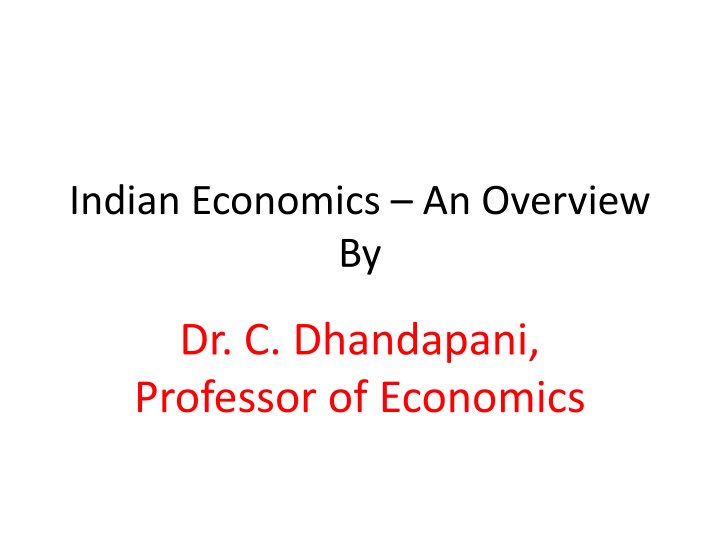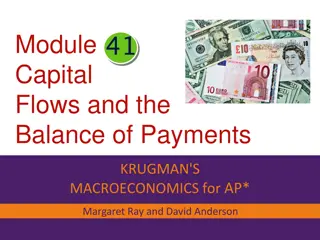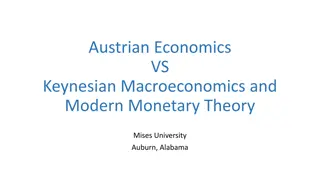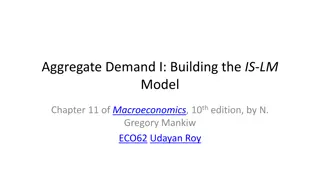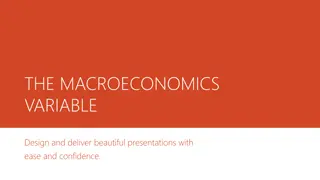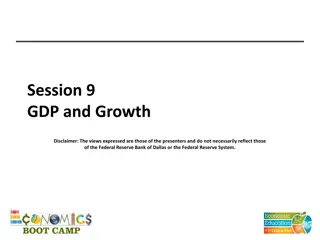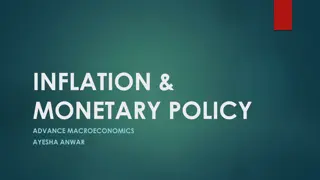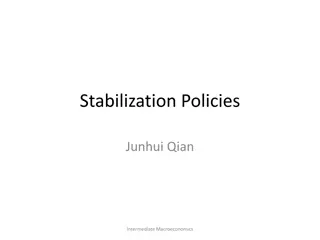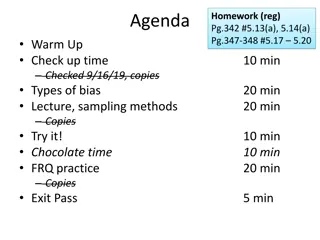AP Macroeconomics FRQ Analysis
The Advanced Placement Macroeconomics exam includes a Free-Response Question (FRQ) section, crucial for scoring well. Understanding the components, practice hints, and working through sample FRQs are essential for success. This tutorial covers a breakdown of FRQ sections, pivotal events, initial and long-term effects, and their importance in economic analysis. Dive into analyzing graphs, monetary policies, money markets, and foreign exchange impacts to enhance your understanding of AP Macroeconomics FRQs.
Uploaded on Apr 04, 2025 | 1 Views
Download Presentation

Please find below an Image/Link to download the presentation.
The content on the website is provided AS IS for your information and personal use only. It may not be sold, licensed, or shared on other websites without obtaining consent from the author.If you encounter any issues during the download, it is possible that the publisher has removed the file from their server.
You are allowed to download the files provided on this website for personal or commercial use, subject to the condition that they are used lawfully. All files are the property of their respective owners.
The content on the website is provided AS IS for your information and personal use only. It may not be sold, licensed, or shared on other websites without obtaining consent from the author.
E N D
Presentation Transcript
Indian Economics An Overview By Dr. C. Dhandapani, Professor of Economics
Salient Features of Indian Economy Indian Economy is termed as the developing economy of the world. Some Features like low per Capita income, higher population below poverty line, poor infrastructure, Agriculture based economy and lower rate of capital formation, tagged it as a developing economy.
WORLD BANK The world Bank Development Report (2006) classified the various countries on the basis of Gross National Income (GNI) Percapita.The countries are divided into low income countries with 2004 GNP percapita $825 and below; and (b) lower middle income countries with GNP percapita ranging between $826 ans $3255.(c) Upper-Middle income countries with GNP Percapita ranging between $3256 - $3255.
Change in World Bank Terminology Following current statstical practices ,the world bank has recently adopted the new terminology in line with the 1993 system of National Accounts.The changes in terms are below; Previous Terminology New Terminology Gross National Product (GNP) GNP percapita Private Consumption General Government consumption Gross Domestic Investment Gross National Income (GNI) GNI Percapita Household final Consumption expenditure General Government Final Consumption Gross Capital Formation
Features of Developing Economy Gradual rise in percapita income from a low level. Gradual rise in percapita saving and capital formation . Gradual decline of the contribution of the agriculture sector towards national income. Gradual expansion of infrastructural facilities. Falling incidence of poverty, adult illiteracy, gender discrimination etc. Gradual shift in occupational structure in favor of industrial and service activities Gradual improvement in the standard of living of common people. Gradual improvements in science and Technology.
Difference between Economic Growth and Economic Development Economic Development It indicates qualitative improvement in the economic progress of a country. It shows not only a sustained increase in national and percapita income but also qualitative changes leading to greater equality of distributions of National income ,Improvements in infrastructural facilities. Economic development includes the notion of economic growth. Economic Growth It indicates quantitative improvement in the economic progress of a country. It shows growthin national income and Percapita income overtime. A country may grow but it may not help.
Strategy of Economic Growth Strategy of Balanced Growth According to Nurkse,this Strategy can contribute to growth of an underdeveloped economy if both the manufacturing and agricultural sectors advance backwardness of one sector will arrest growth in the other. Advocated by Hirschanman underdeveloped countries can be stimulated by creating imbalance rather than balance among different sectors of the economy. in synchronisation as ,Singer,Fleming ,Growth in the
